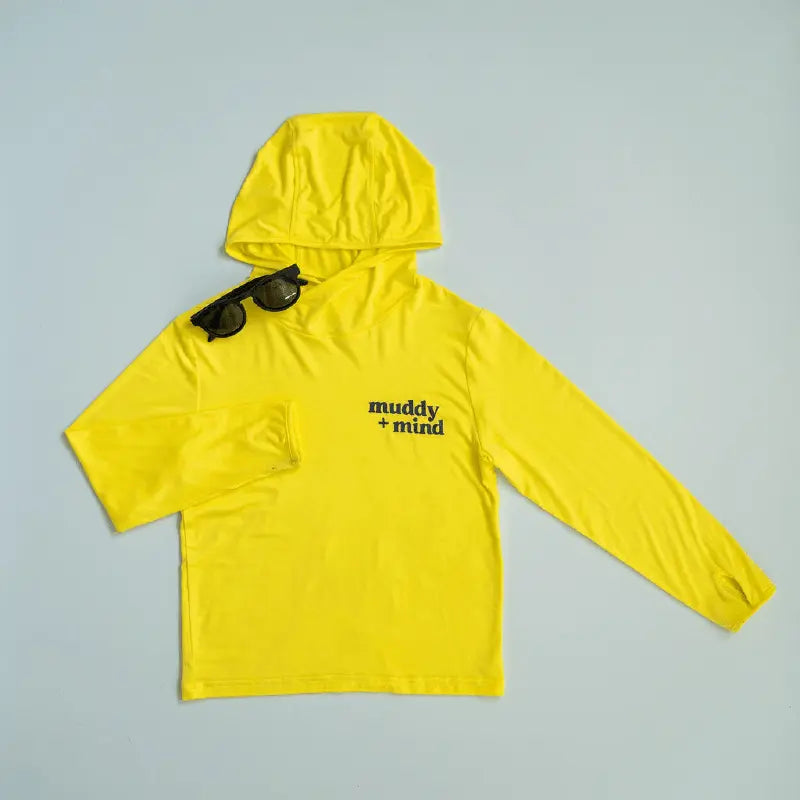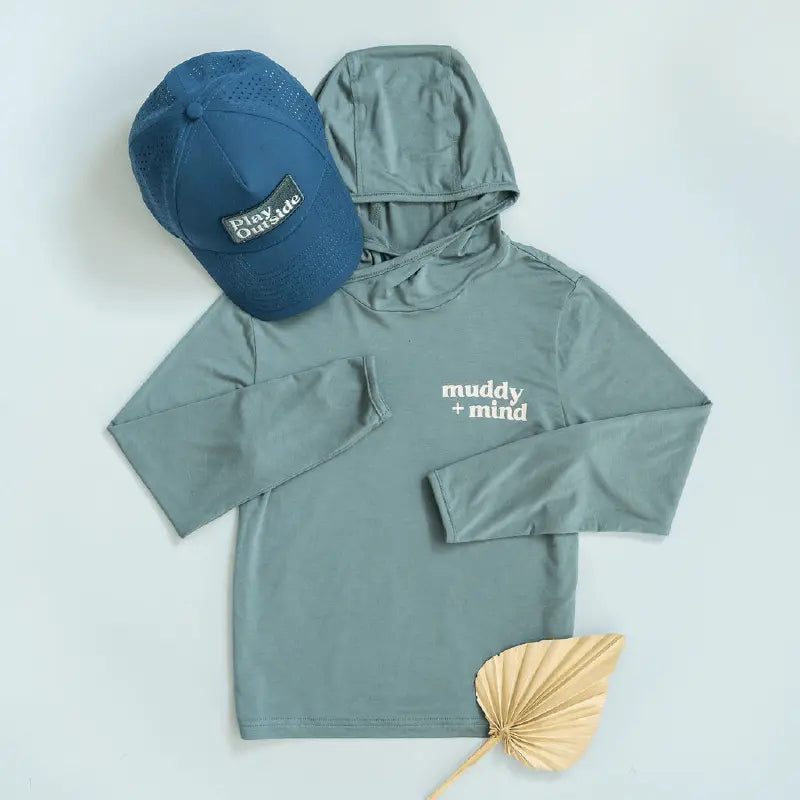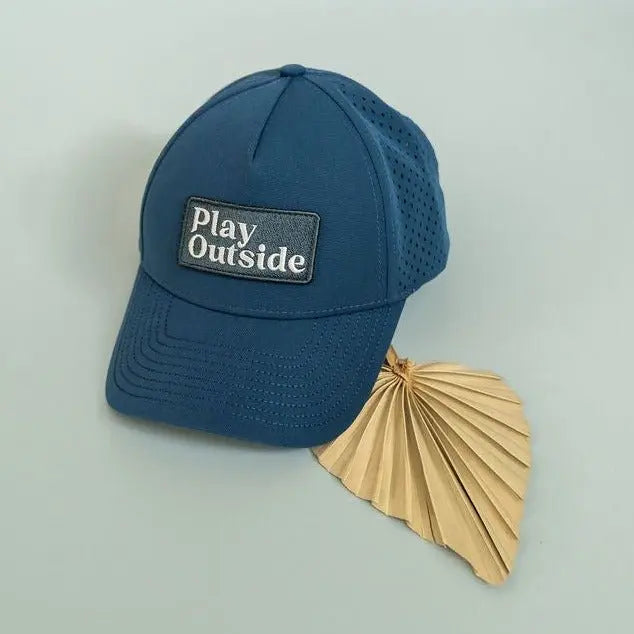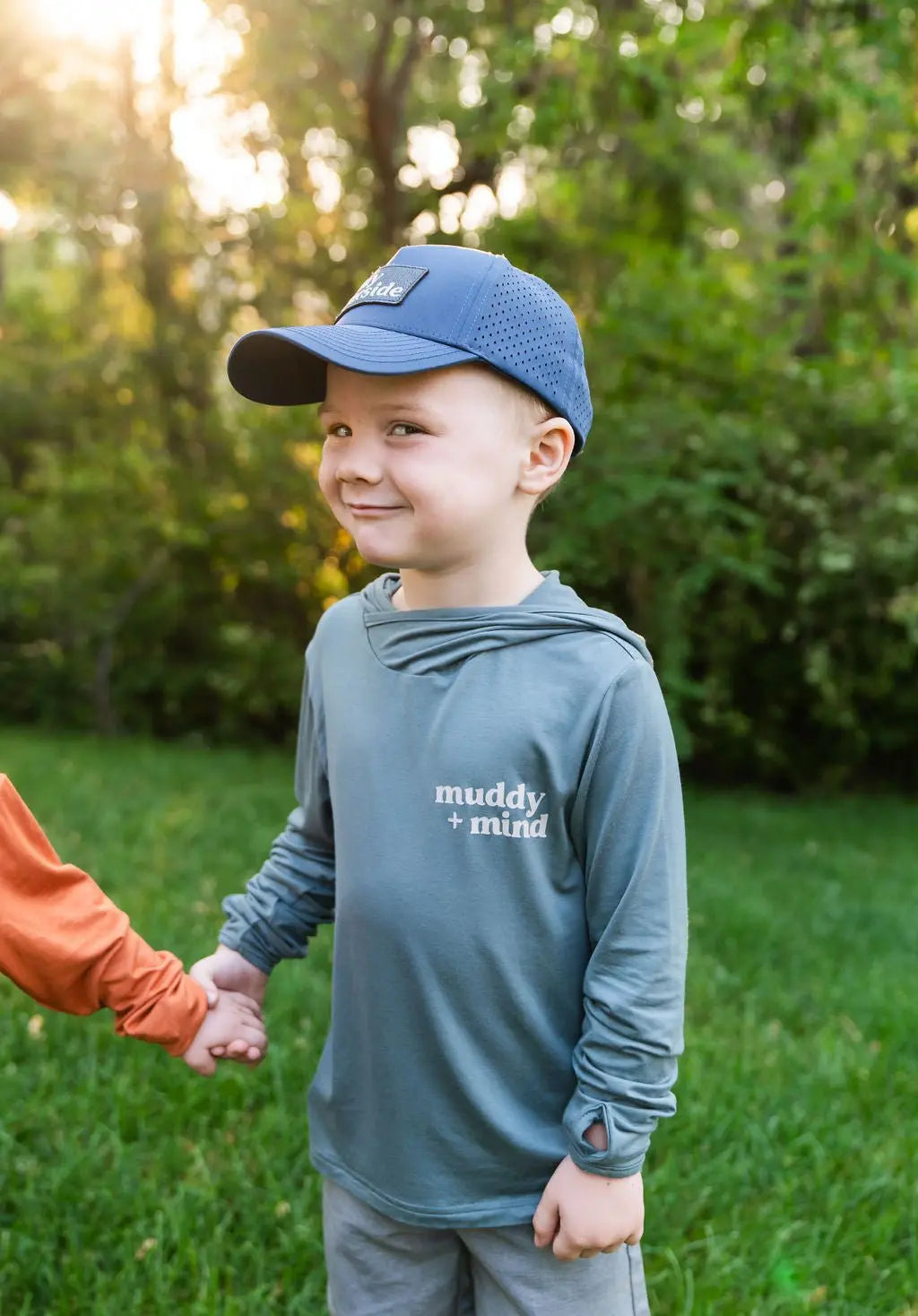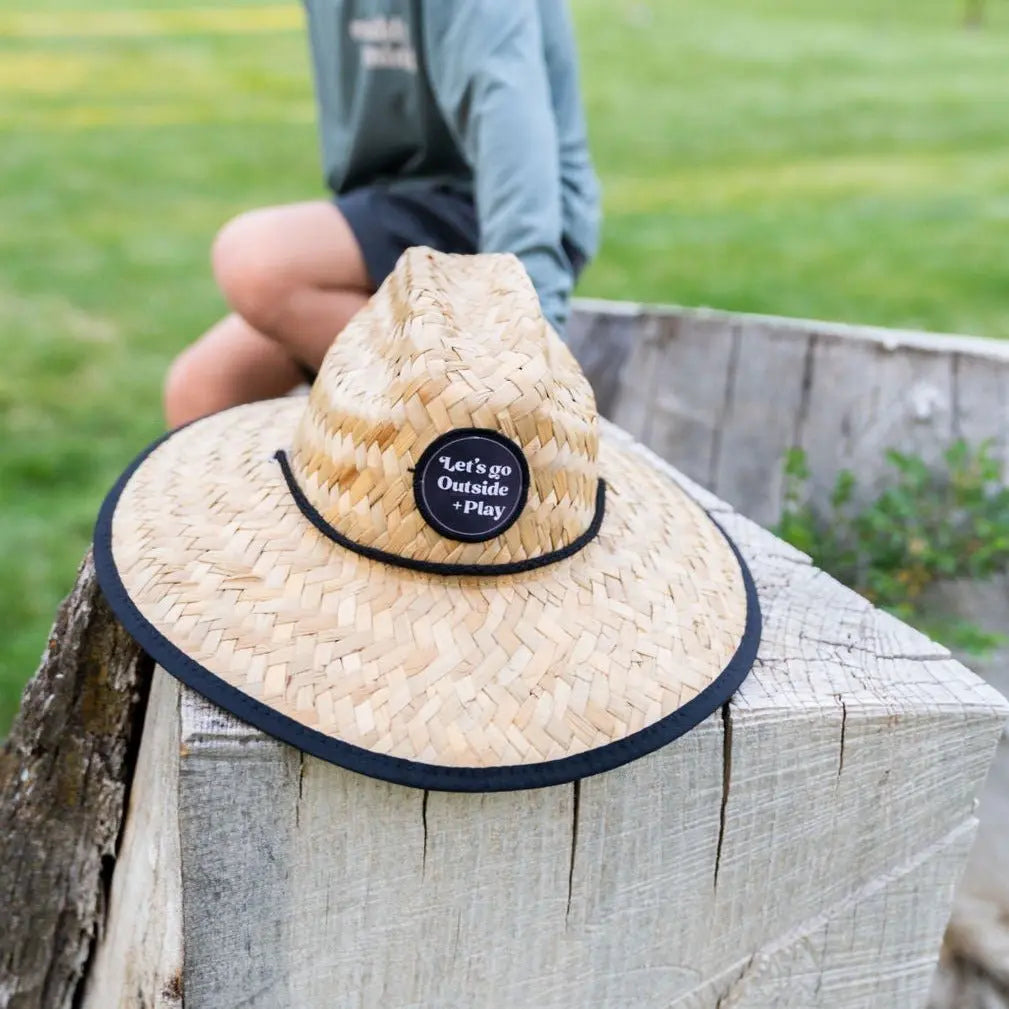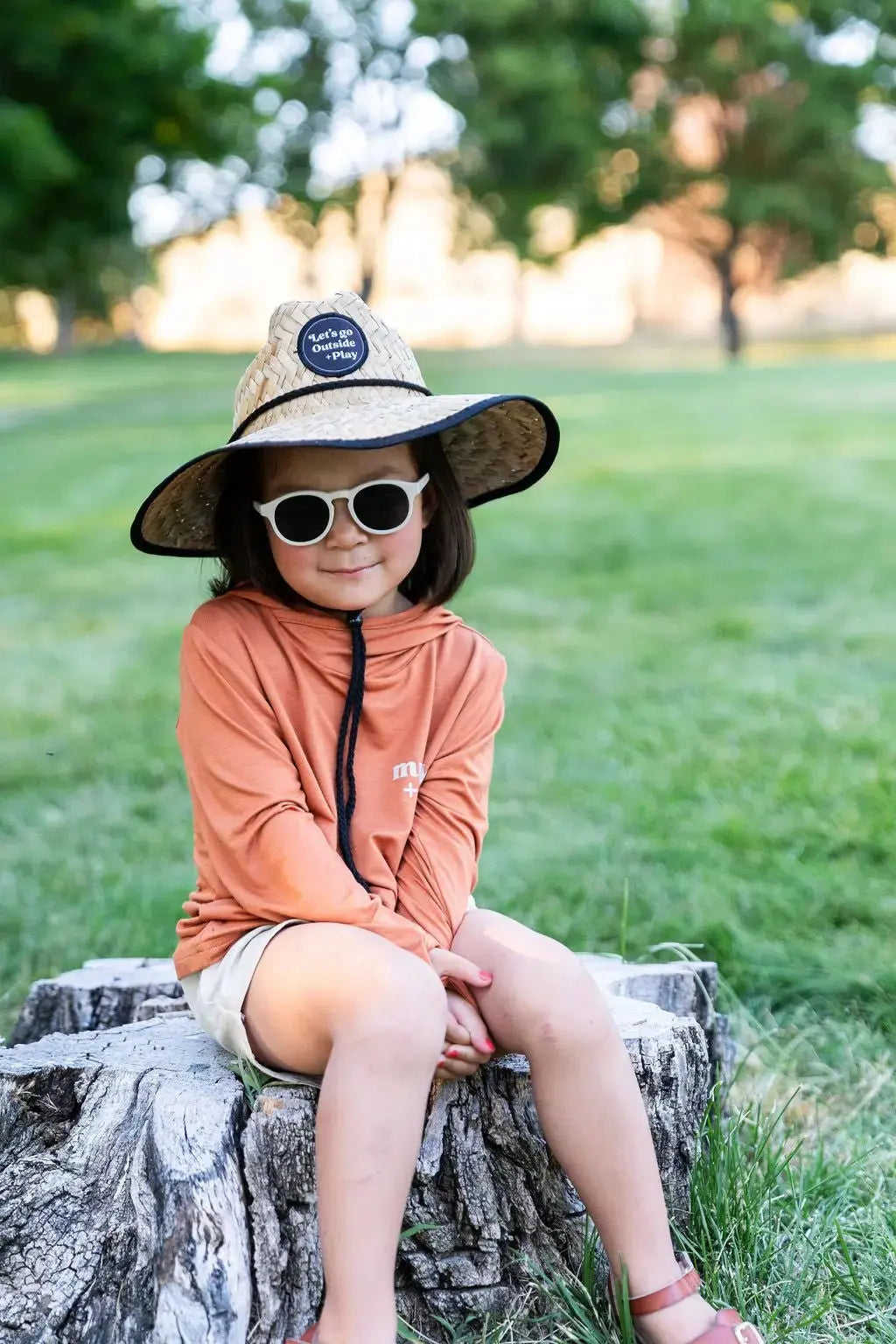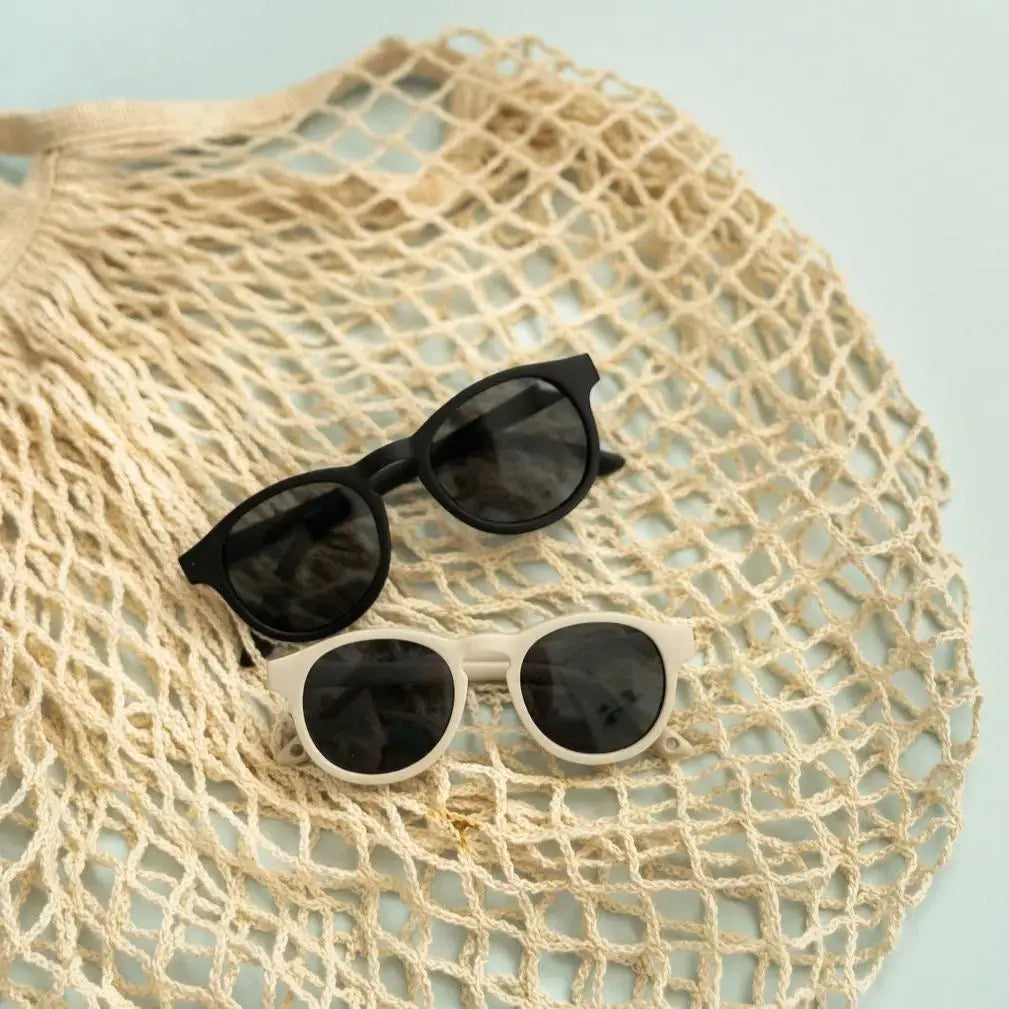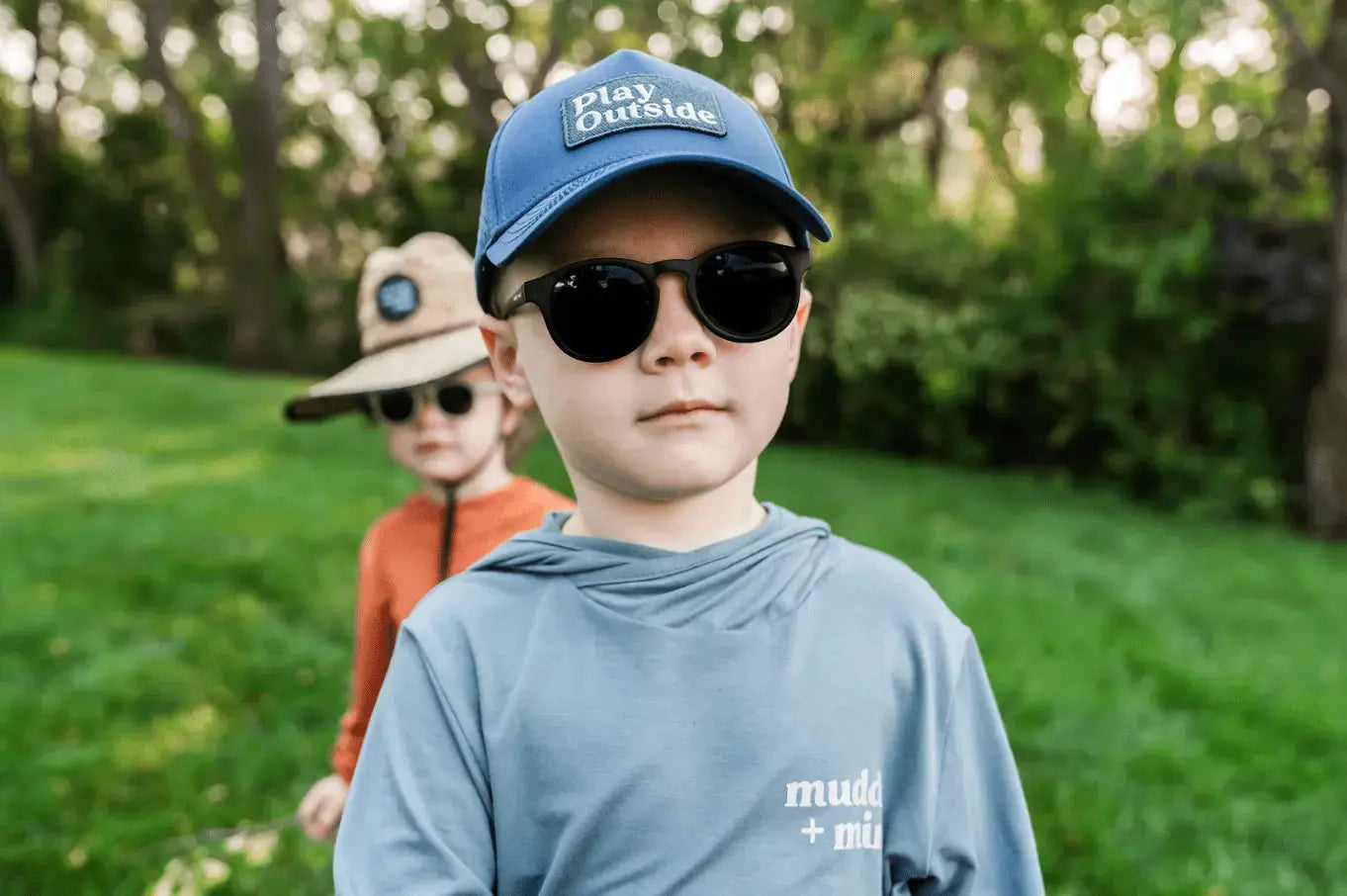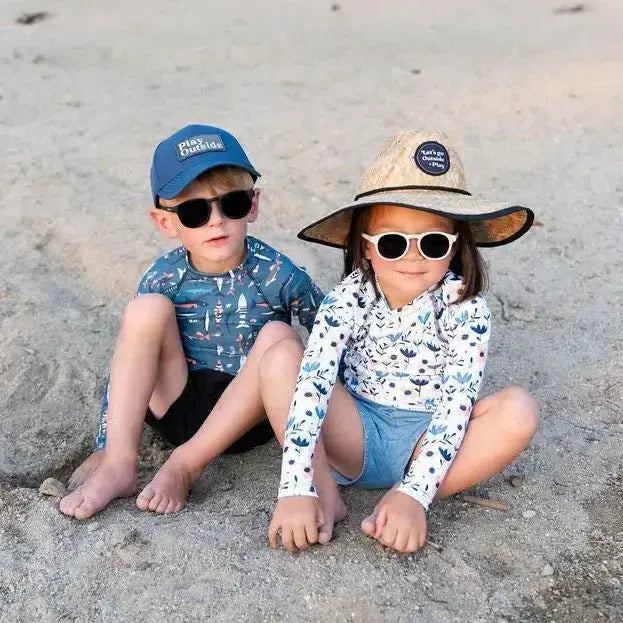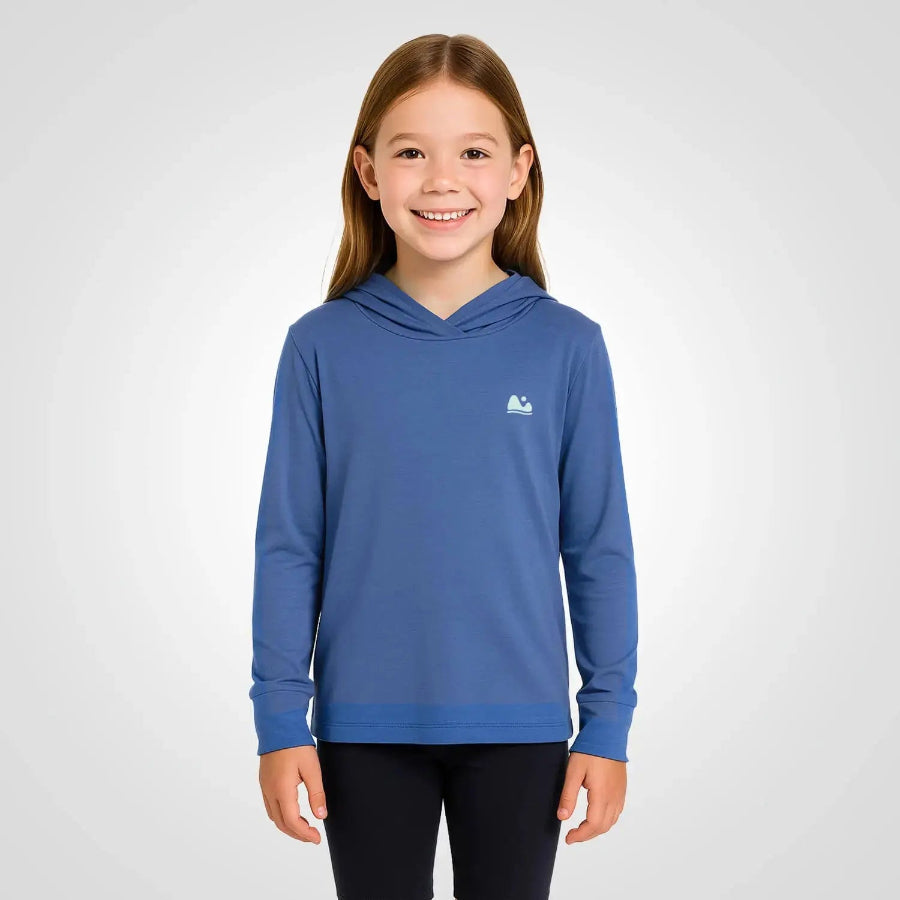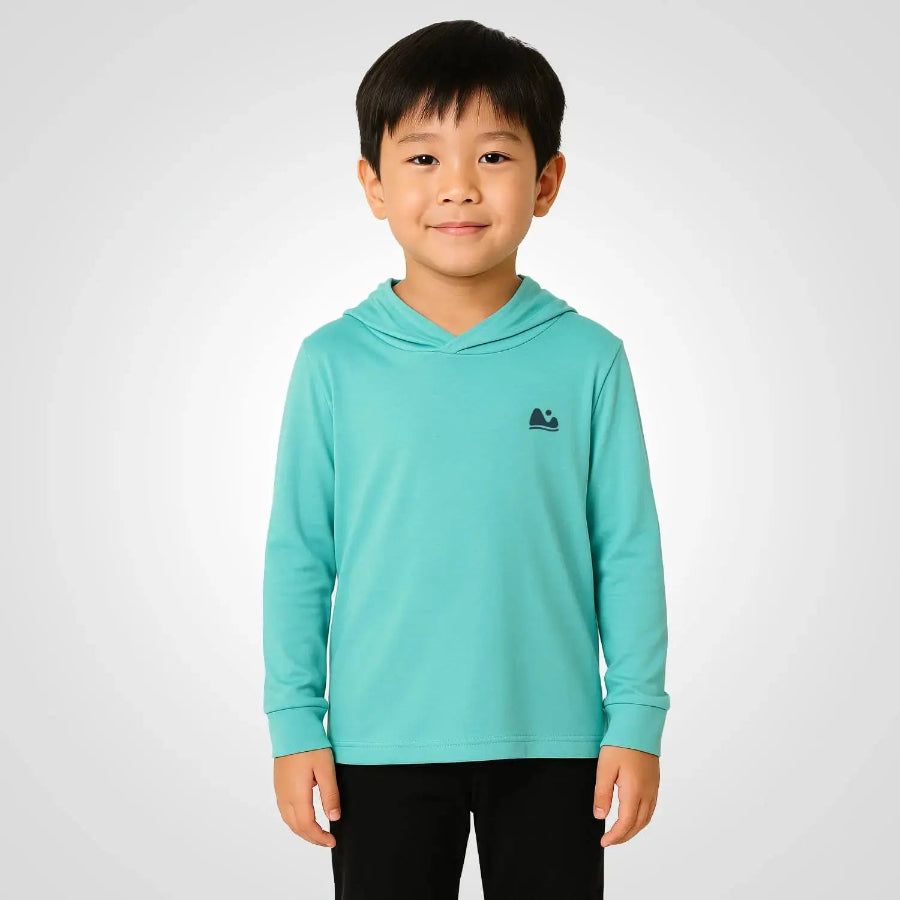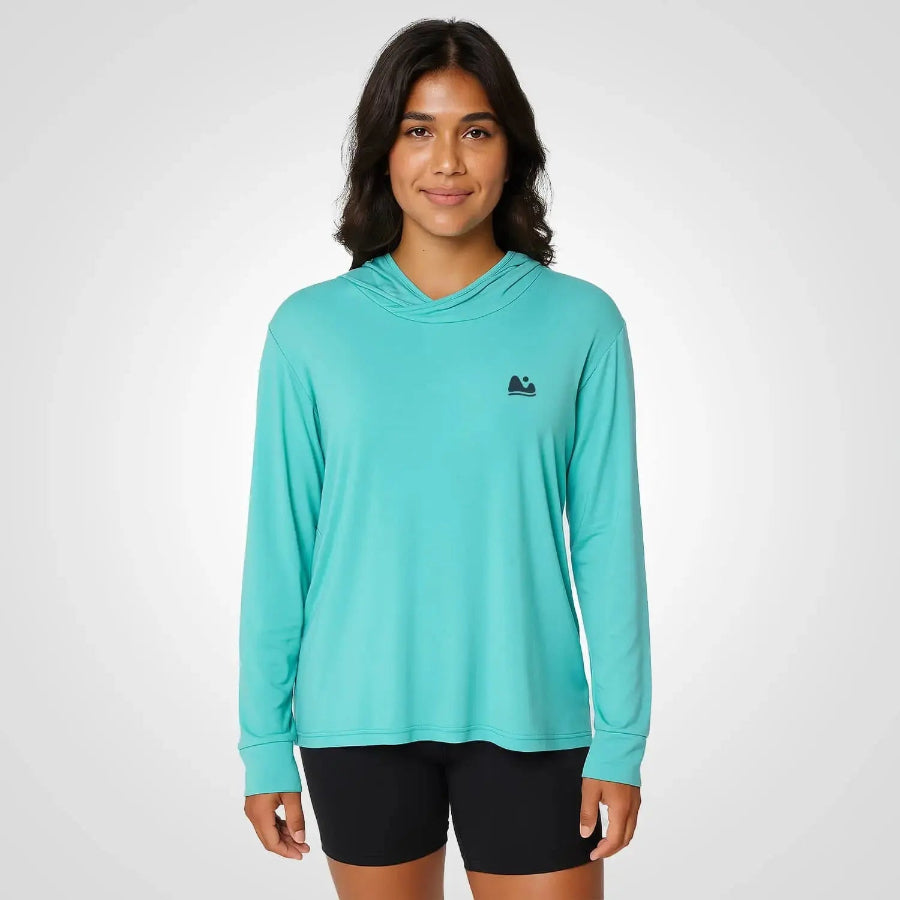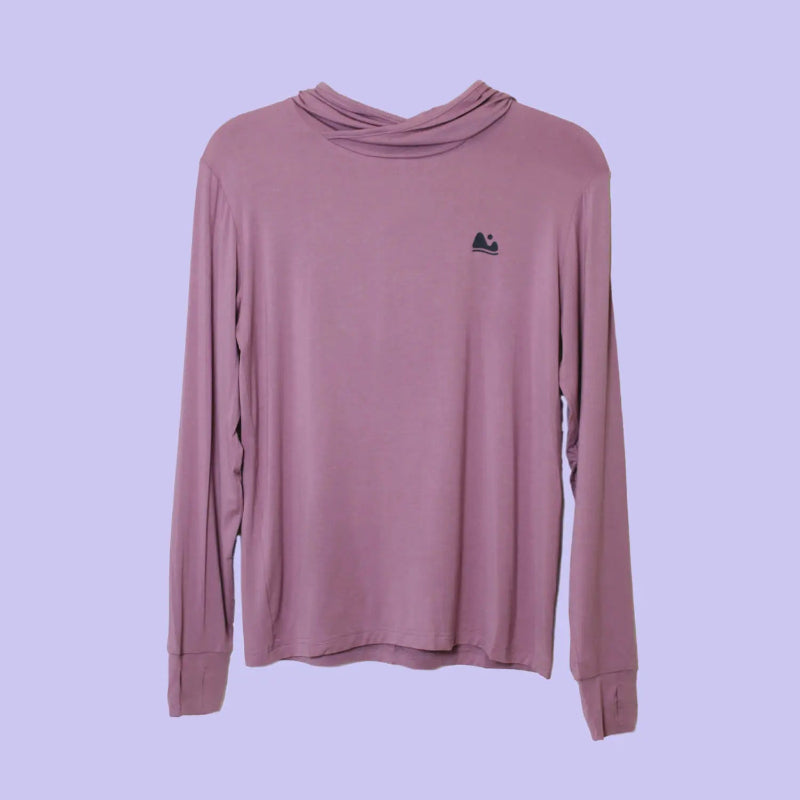Up to 30% off on ONE shirts and Rash guards when you get one for you and one for your little one to match. Automatically applies at checkout.
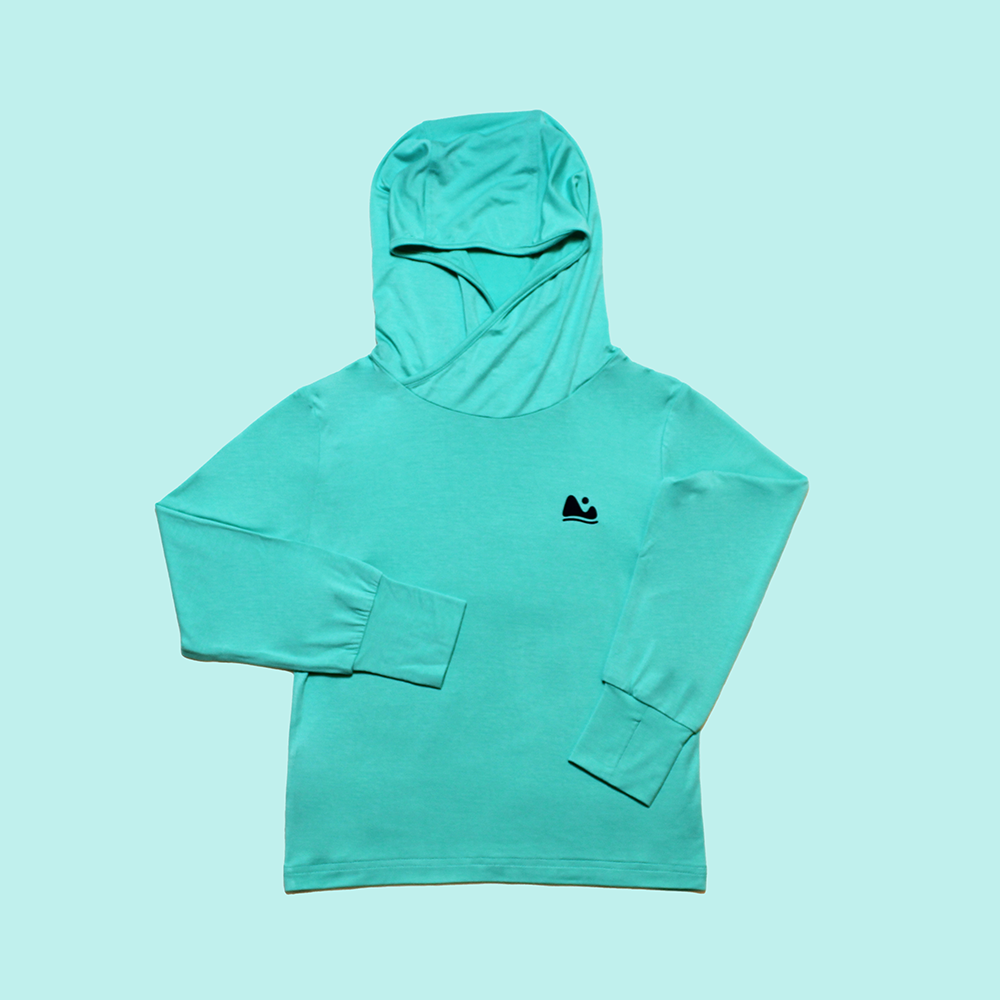
Base Layers 101: How to Choose the Right Fabric for Your Kids’ Outdoor Adventures
When I first started designing the ONE Shirt, I tried every fabric under the sun.
Literally.
From classic synthetics to fancy merino wool, I wanted to find the one that could handle mud, heat, cold, and chaos, and still feel good on sensitive skin.
After years of testing, I landed on bamboo. But the truth is, there’s no one-size-fits-all when it comes to base layers.
Each fabric has its own strengths, and knowing them helps you make the best choice for your family’s adventures.
What a Base Layer Actually Does
Before comparing fabrics, it helps to understand a base layer’s job:
- Regulate body temperature
- Wick moisture (sweat or condensation) away from skin
- Dry quickly to prevent chills
- Stay comfortable against sensitive skin
For kids, especially those who play hard, sweat easily, and complain loudly when itchy, getting this balance right can make or break an adventure.
Bamboo Viscose: The Ultra-Soft All-Rounder
Bamboo has quickly become a favorite for families who value comfort and versatility.
Pros:
- Thermo-regulating: Keeps kids warm in the cold and cool in the heat.
- Moisture-wicking: Pulls sweat away efficiently, drying faster than cotton.
- Naturally soft and hypoallergenic: Ideal for kids with sensitive or eczema-prone skin.
- Odor-resistant: Fewer washes between wears (parents everywhere rejoice).
- Sustainable: Derived from a renewable resource that uses less water than cotton.
Cons:
- Pure bamboo can lose structure when wet if not blended with stronger fibers.
- Slightly slower drying time than some synthetics in very wet conditions.
That’s why our ONE Shirt uses a bamboo viscose blend, it keeps the softness while boosting strength and performance.
Merino Wool: Nature’s Technical Powerhouse
Merino wool has long been a favorite among hikers and outdoor pros, and for good reason.
Pros:
- Excellent insulation: Traps warm air even when damp.
- Breathable: Adjusts to body temperature changes during activity.
- Natural odor resistance: Great for multi-day trips or camping.
- Durable: High-quality merino blends can last for years with care.
Cons:
- Itch factor: Even “soft” merino can feel irritating for some kids.
- Delicate care: Requires gentle washing and air drying.
- Cost: Generally more expensive than bamboo or synthetics.
If your child doesn’t mind texture and you’re camping in very cold or wet climates, merino is a fantastic mid-winter option.
Synthetic Blends: The Technical Performer
Fabrics like polyester and nylon have dominated performance wear for decades.
Pros:
- Lightweight and fast-drying: Ideal for high-intensity activities or frequent washing.
- Durable and stretch-friendly: Great for older kids who are hard on clothes.
- Affordable and widely available.
Cons:
- Odor retention: Synthetic fibers hold onto smell.
- Less breathable: Can trap heat and moisture, especially under layers.
- Environmental impact: Derived from non-renewable materials and shed microplastics.
Synthetic base layers are great for families who prioritize durability or are on a budget, but they’re not always the best for sensitive skin or long-term sustainability.
So Which One Is Best?
| Category | Bamboo | Merino Wool | Synthetics |
|---|---|---|---|
| Softness | ★★★★★ | ★★★★☆ | ★★★☆☆ |
| Warmth | ★★★★☆ | ★★★★★ | ★★★☆☆ |
| Breathability | ★★★★★ | ★★★★☆ | ★★★☆☆ |
| Drying Speed | ★★★★☆ | ★★★☆☆ | ★★★★★ |
| Odor Resistance | ★★★★☆ | ★★★★★ | ★★☆☆☆ |
| Sustainability | ★★★★★ | ★★★★☆ | ★☆☆☆☆ |
| Sensitive Skin Friendly | ★★★★★ | ★★★☆☆ | ★★☆☆☆ |
Verdict:
- For everyday comfort and versatility → Bamboo wins.
- For cold, wet winter adventures → Merino wool shines.
- For high-performance, budget-friendly options → Synthetics still have a place.
Why We Chose Bamboo for the ONE Shirt
When we designed the ONE Shirt, our goal was a fabric kids could live in, at the beach, on a hike, or under a snowsuit.
Bamboo gave us that balance:
- Warm enough for winter, cool enough for summer.
- Soft enough for sensory comfort.
- Durable enough for daily wear and countless washes.
It’s the shirt that replaces half your kids’ wardrobe and helps you pack light without compromise.
Caring for Each Fabric
| Fabric | Care Tips |
|---|---|
| Bamboo | Wash cold, tumble low or air dry. Avoid bleach and fabric softeners. |
| Merino Wool | Hand wash or machine wash on wool cycle, lay flat to dry. |
| Synthetics | Wash warm, tumble dry low. Avoid high heat to prevent shrinking. |
Proper care keeps fibers strong and extends their lifespan—important for both performance and sustainability.
Final Thoughts
No matter which fabric you choose, the best base layer is one your child will actually wear.
If it’s soft, easy to layer, and quick to dry, you’re already winning.
Whether it’s merino, bamboo, or a blend of both, what matters most is that it helps your family stay outdoors longer, laugh harder, and explore more comfortably.

